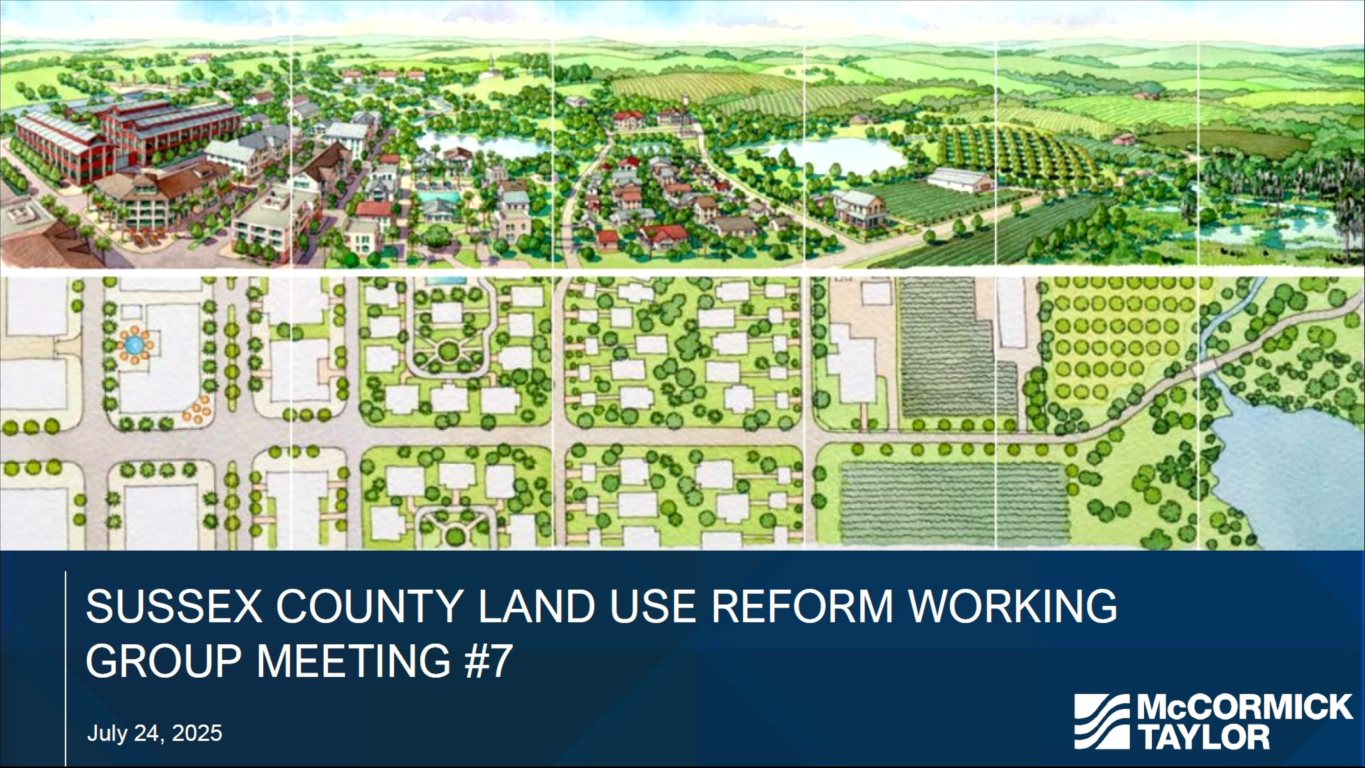At its July 24th meeting, the Sussex County Land Use Reform Working Group continued refining a set of recommendations that will shape the county’s 2028 Comprehensive Plan.
The session was not about introducing new proposals, but fine-tuning existing ones. Starting with 10 items earlier in the year and expanding to 22 before consolidating on 17, the group’s current list reflects weeks of deliberation.
With a goal to finalize everything by August 21st, the work is intensifying around how to guide future development without repeating the mistakes of the past.
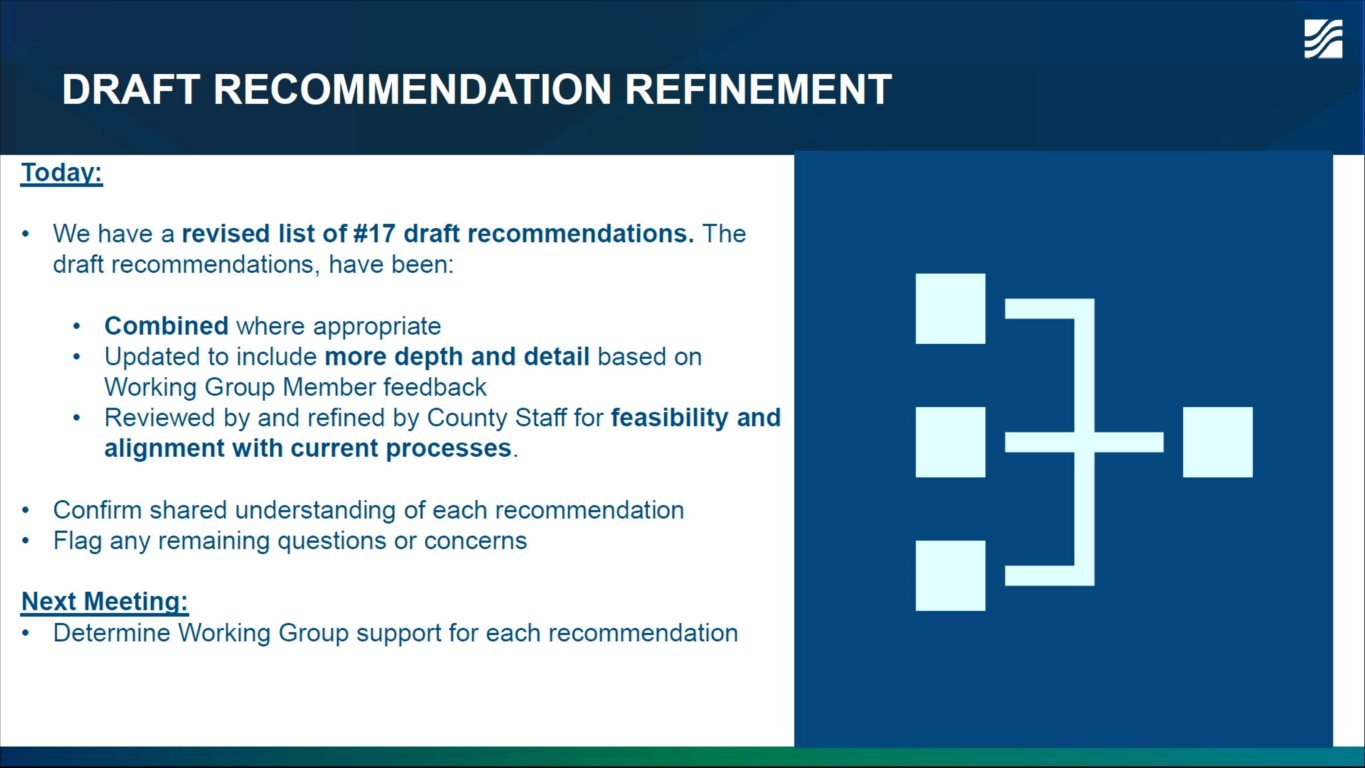
Aligning Future Growth Areas With State and Local Data
Recommendation 1: Revise the Future Land Use Map (FLUM) using the State Strategies for Spending to better define growth and rural boundaries.
While there was broad support for updating the FLUM, several members raised concerns about relying on the current State Strategies map to shape new growth zones.
They argued that the state’s map is partly based on Sussex County’s 2018 Future Land Use Map, making it a “chicken-and-egg” process where outdated growth zones inform both maps in a loop.
Using that as the sole basis, they warned, risks repeating old assumptions.
State representatives responded that the State Strategies map is updated every five years with improved data and the latest local comprehensive plans from across Delaware, 28 new ones since 2020, and that Sussex County will be part of that process.
By 2028, a new state map will be available, giving the county a two-year planning window to reassess growth areas using more current data before both maps are aligned.
You can hear more specifics about this specific rhetoric in the meeting minutes from around minute 37 to minute 41 of the meeting.
Phased Countywide Rezoning Effort
Recommendation 2: Launch a comprehensive, phased rezoning process aligned with the 2028 plan, beginning with AR-1 zoning.
This recommendation drew strong support but also concerns about clarity. Members emphasized that the term “comprehensive rezoning” should be clearly defined and include public engagement, as well as a definition for “growth zones” referenced in recommendation with #9.
Some questioned the phrase “beginning with AR-1,” noting that AR-1 is the county’s default zoning and not intended as the first or only district to be rezoned.
Others argued that a true comprehensive effort should address all zoning districts (MR, GR, HR, and more) once regulations are updated.
There was consensus that zoning code updates should come first, followed by rezoning efforts, to ensure community members understand what new zoning designations actually allow.
You can hear more specifics about this specific rhetoric in the meeting minutes from around minute 41 to minute 47 of the meeting.
Codified Rezoning Criteria for Transparency
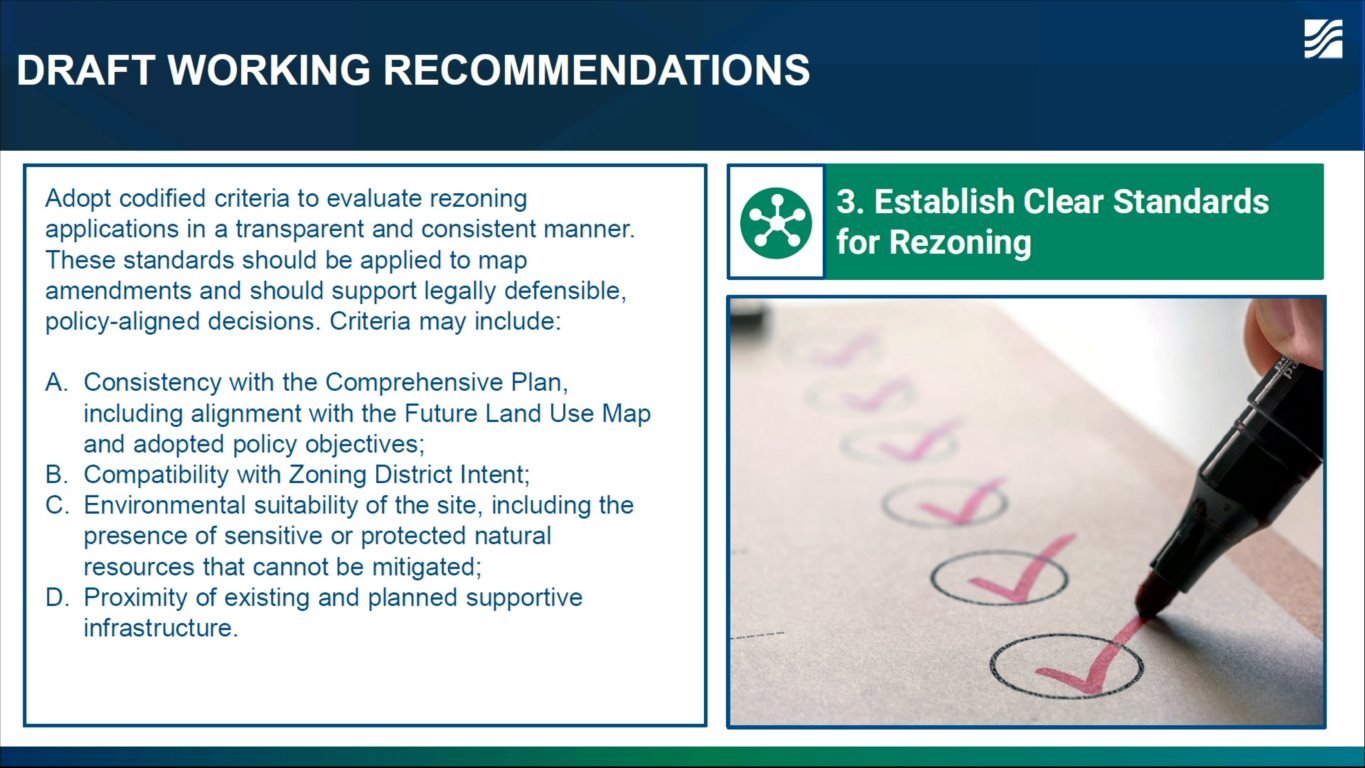
Recommendation 3: Develop consistent and defensible standards for evaluating rezoning applications.
The group supported creating clear criteria, like consistency with the comp plan, environmental suitability, and proximity to infrastructure, but raised concerns about vague terms and implementation.
Members urged the county to tie zoning decisions directly to housing needs, particularly for lower- and middle-income residents. They emphasized that when identifying growth areas and establishing growth zones, it’s essential to first understand the demand for different housing types. This understanding ensures zoning can be set in a way that produces adequate amounts of the housing types most in demand.
There was also debate over the role of environmental suitability features in rezoning, with some arguing those concerns should be handled through separate regulations rather than case-by-case zoning decisions.
You can hear more specifics about this rhetoric in the meeting minutes from around minute 48 to minute up to the first full hour of the meeting.
Define Missing Middle Housing Types
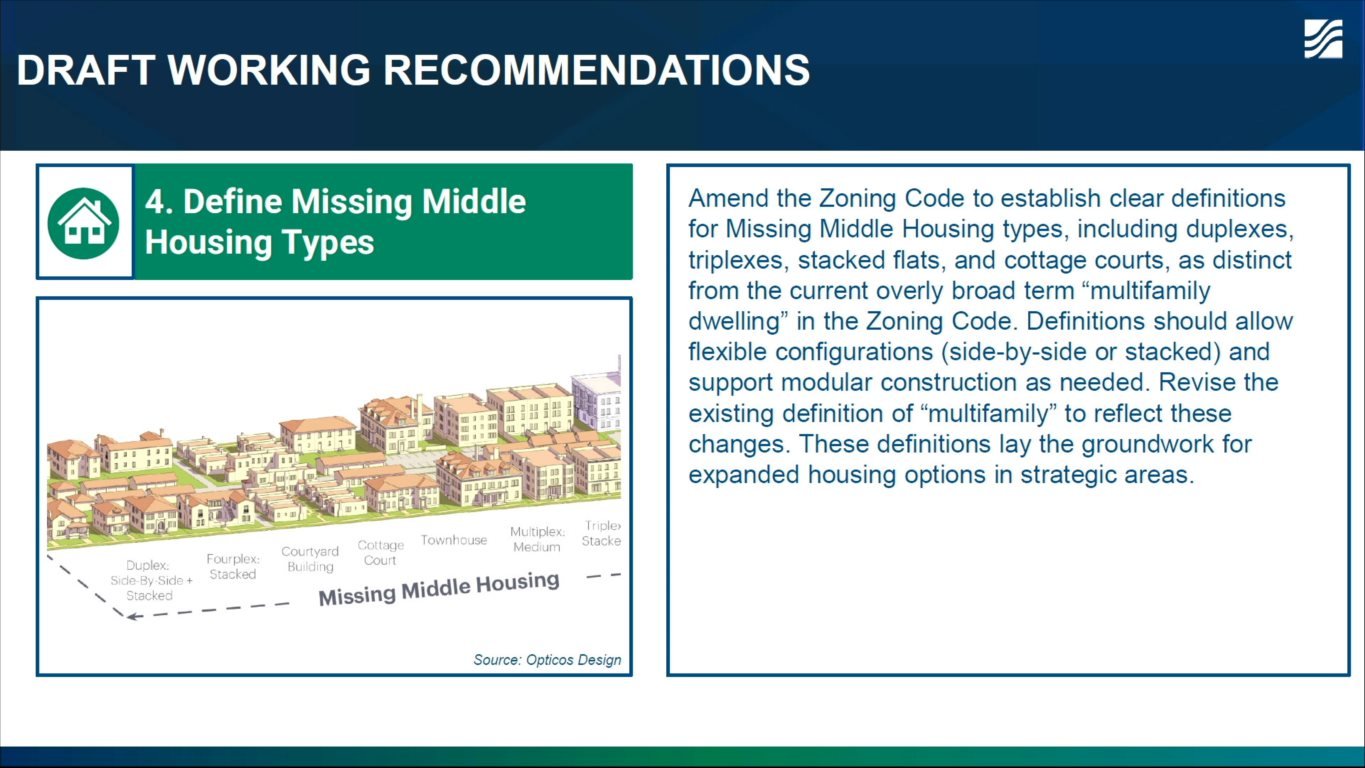
Recommendation 4: Establish precise definitions for missing middle housing, including duplexes, triplexes, and cottage courts.
There was general agreement that better public understanding of housing types, like cottage courts and stacked flats, will help reduce resistance and improve policy transparency.
The Delaware State Housing Authority also noted a new bipartisan bill introduced by Senator Blunt Rochester that would provide HUD grants directly to local governments to create pre-reviewed design plans for missing middle housing types.
If passed, this funding could help Sussex County develop design templates, secure community buy-in on preferred styles, and speed up the approval process.
You can hear more specifics about this rhetoric in the meeting minutes from around minute 60 to minute 64 of the meeting.
Expand Housing Options in Growth Areas
Recommendation 5: Permit a broader mix of housing types in GR, MR, and HR zoning districts.
Building on the previous recommendation, members emphasized the need for more specificity in what housing types are suitable for each zoning district.
Suggestions included limiting GR zones to single-family and duplexes, while allowing higher-density types in MR and HR districts.
A tiered approach based on proximity to town centers was widely supported as an initial idea.
You can hear more specifics about this specific rhetoric in the meeting minutes, starting from around minute 64 to minute 67 of the meeting.
Reform Bulk Standards and Setbacks
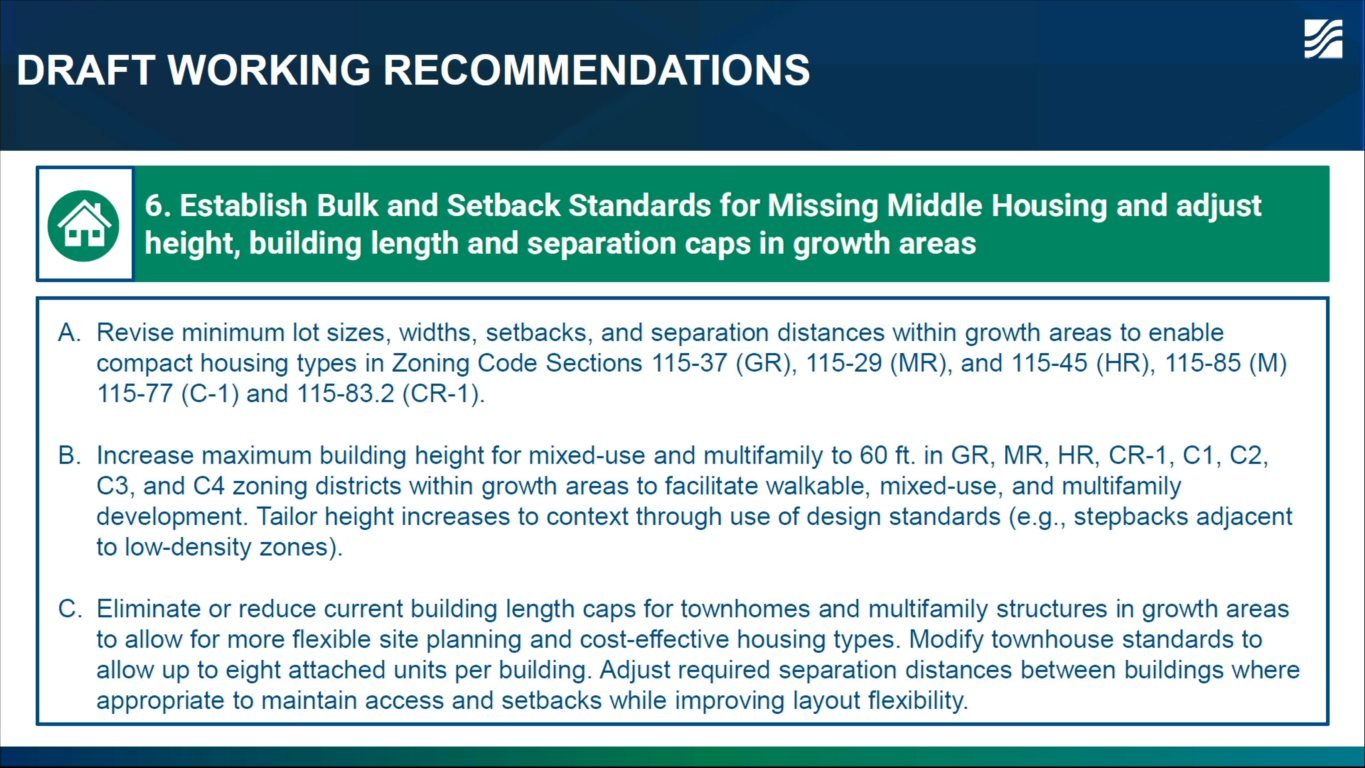
Recommendation 6: Adjust lot sizes, building heights, and separation rules to enable density goals in growth zones.
Members criticized existing bulk standards for making it nearly impossible to achieve the densities allowed on paper.
They argued that lot widths, building length limits, and setbacks often reduce actual buildable space and function as hidden forms of downzoning.
Many advocated for rewriting or eliminating bulk standards that prevent development from aligning with zoning intent.
One participant suggested removing the eight-unit cap on townhomes per building, explaining that longer attached rows would make it easier to reach allowed densities and add more units within the same footprint.
This change, they said, would help increase housing supply and improve affordability.
You can hear more specifics about this specific rhetoric in the meeting minutes, starting from around minute 67 to minute 70 of the meeting.
Support Mixed-Use Development in CR-1
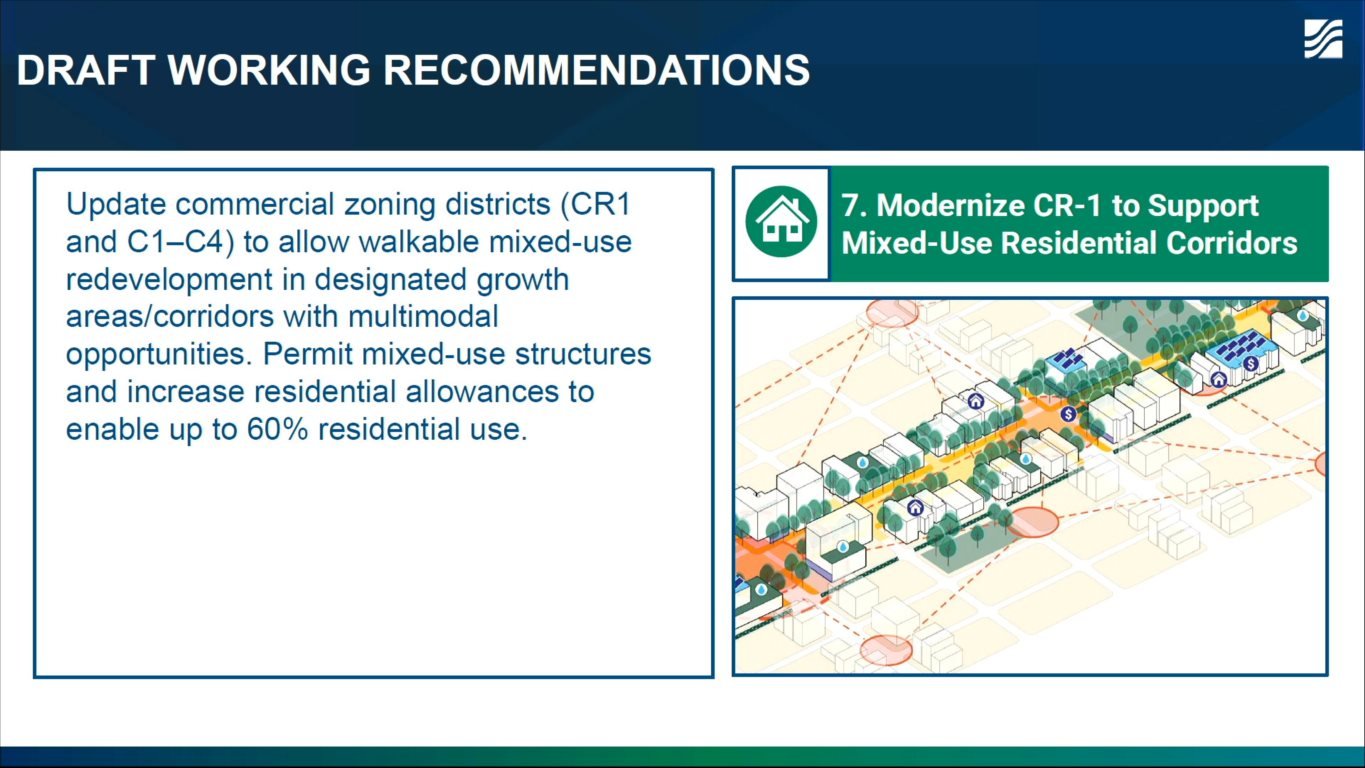
Recommendation 7: Modernize CR-1 and other commercial zones to allow walkable, mixed-use redevelopment with up to 60% residential use.
This recommendation received no discussion during the meeting, but aligns with broader themes around encouraging compact, mixed-use development in growth corridors.
Tie Transportation Upgrades to Development Phases
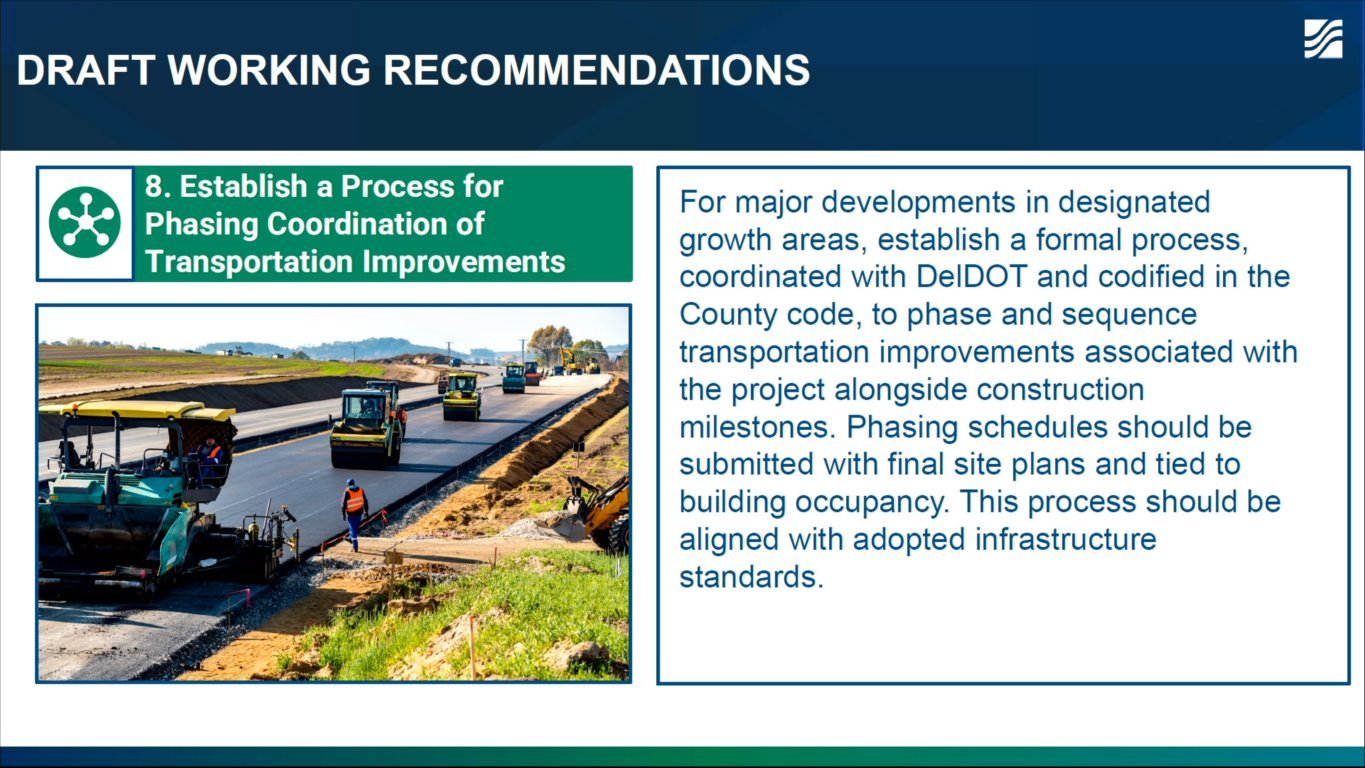
Recommendation 8: Require developers to coordinate transportation improvements with DelDOT and link them to construction milestones.
The group agreed that streamlining approvals in growth zones can help steer development to areas with adequate infrastructure.
Several members stressed the importance of rewarding the “right” projects, those aligned with the county’s growth strategy, through faster reviews and incentives. However, they also warned against sacrificing oversight in the name of efficiency.
Clearly defining growth zones and desirable project types will be key to implementing this recommendation.
You can hear more specifics about this specific rhetoric in the meeting minutes, starting from around minute 70 to minute 97 of the meeting.
Final Reflections on Growth and Planning
Although the group was only able to review 8 of the 17 recommendations during this allotted meeting timeframe, the closing discussion revealed several shared concerns:
- Infrastructure Overload: Members stressed that encouraging density in growth zones is not enough. Rural areas also need protections to prevent continued infrastructure strain.
- Zoning vs. Reality: DelDOT noted that development often occurs outside Transportation Improvement Districts, misaligning land use with infrastructure investment.
- Transparency and Group Input: Frustrations emerged about how some proposals disappeared from the draft list without explanation. Members asked for clearer communication and a formal vote on final recommendations.
- Urgency and Specificity: There was a sense that while progress is being made, many recommendations remain too vague to be actionable. Calls were made to define densities by district and reorganize the list for clarity.
You can hear more specifics about this specific rhetoric in the meeting minutes, starting from around minute 97 until towards the very end of the meeting.
Public Comment Highlights Affordability Gap
In the last 5 minutes of the meeting, within the public comments allotted timeframe of the meeting, a local thanked the group for their hard work towards the creation of these recommendation items, but he stressed that housing affordability remains an unresolved challenge for Sussex County.
He cited data showing that most households in Sussex County earn under $99,000, yet very few new homes are priced below $350,000 in our area.
Barrasso finished by asking whether the group had clearly identified affordability gaps, whether the current recommendations address those gaps, and how land use changes could help close them.
Upcoming Meetings & Conclusion
The next meeting of the Land Use Reform Working Group took place on August 5. The group had initially aimed to finalize recommendations by this date, but discussion will continue at the August 21st session.
Do you live in Sussex County or follow local planning efforts? Which issues matter most to you as the county updates its land use policies? Share your thoughts on these recommendations and the current work the land use reform working group is trying to accomplish in the comments!
All referenced documents and details from our blog can be found through meeting notes / materials that are available through Sussex County’s official website, and public meeting minutes & broadcasts archive.
Sources: Land Use Reform Working Group Meeting, Draft Recommendations, Meeting Presentation

